Choosing the right winter coat for your large dog is crucial to keep them warm and healthy during the colder months. When considering a winter coat, it’s essential to take into account your dog’s specific breed, size, and needs to ensure a proper fit and adequate warmth. This article provides tips on assessing your dog’s measurements and discusses different material options, including waterproof or water-resistant materials that provide insulation. It also highlights various style options and additional features such as reflective strips, removable hoods, and adjustable straps for a secure fit. By following these guidelines, you can choose a winter coat that keeps your furry friend comfortable and safe throughout the winter season.
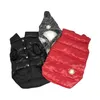
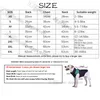
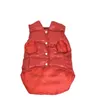
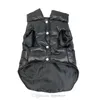

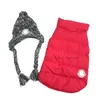
Consider Your Dog’s Specific Needs
First and foremost, it’s essential to consider your dog’s breed and size when selecting a winter coat. Large dogs have different needs than smaller breeds, so it’s essential to choose a coat that fits your dog correctly. You don’t want a coat that’s too tight or too loose as it can cause discomfort or restrict movement. Also, some breeds may require more insulation than others, so it’s vital to consider the climate you live in and your dog’s specific needs.
The next thing to consider is the level of warmth your dog requires. Dogs with thick fur may not need as much insulation as those with short hair or no hair at all. However, even dogs with thick fur can benefit from an extra layer of protection against extreme cold temperatures. Look for coats made with high-quality materials such as fleece, down, or wool to ensure your dog stays warm and cozy all winter long.
Another factor to consider is the design of the coat. Some coats are designed to cover the entire body, while others only cover the back and chest area. Full-body coats provide more coverage and protection against the elements, but they may not be suitable for all dogs. Some dogs may feel uncomfortable wearing a full-body coat, so it’s essential to consider your dog’s preferences and comfort level.
Additionally, it’s important to choose a coat that’s easy to put on and take off. Large dogs may require more effort to dress, so look for coats with adjustable straps or zippers to make the process smoother. You don’t want your dog to feel stressed or anxious during the dressing process.
Assess Your Dog’s Measurements
However, finding the right coat size for your dog can be a challenge. If the coat is too small, it will be uncomfortable and restrict their movement. On the other hand, if it is too big, it will not provide adequate warmth and protection.
The first step in finding the perfect winter coat for your dog is to accurately measure their body. Here are some tips on how to do this:
1. Measure the length of their back: Start at the base of your dog’s neck and measure all the way to the base of their tail. This will give you the length measurement that you need to find the right coat size.
2. Measure neck circumference: Wrap a measuring tape around the base of your dog’s neck. Make sure to leave enough room for your dog to breathe comfortably.
3. Measure chest girth: Wrap the measuring tape around the widest part of your dog’s chest, just behind their front legs. Again, make sure to leave enough room for your dog to move freely.
Once you have these measurements, you can use them to find the appropriate coat size for your dog. Most winter coats will have a size chart that correlates with different measurements. Be sure to follow this chart carefully to ensure that you get the right size.
It is also important to consider the style of coat that will best suit your dog’s needs. Some dogs may prefer a coat with a hood or extra insulation, while others may prefer a lighter weight option. Consider your dog’s activity level and the climate in which you live when selecting a coat.
Material Matters
One popular material option for winter coats is fleece. Fleece is soft, lightweight, and provides excellent insulation for your furry friend. It is also relatively affordable and easy to care for. However, fleece is not waterproof, which means it may not be the best option for dogs who love playing in the snow or rain.
Another common material option for winter coats is nylon. Nylon is durable, lightweight, and water-resistant, making it an excellent option for dogs who spend a lot of time outdoors. It is also easy to clean and maintain. However, nylon does not provide as much insulation as other materials, so it may not be the best option for dogs living in extremely cold climates.
If you live in an area with heavy snowfall or rain, then you should consider a winter coat made from waterproof or water-resistant material such as Gore-Tex or neoprene. These materials are designed to repel water, keeping your dog dry and warm even in the wettest conditions. Additionally, they offer excellent insulation to keep your dog comfortable in cold temperatures.
For ultimate warmth, you may want to consider a winter coat made from down or synthetic insulation. Down is a natural insulator that is incredibly efficient at trapping heat. However, it can be expensive and difficult to maintain. Synthetic insulation, on the other hand, is cheaper and easier to care for than down. It is also hypoallergenic, which makes it a great option for dogs with sensitive skin.
Style Considerations
One important consideration when choosing a winter coat for a large dog is the style of the coat itself. Full-body coverage coats are great for larger breeds with shorter hair or thinner coats, as they provide maximum warmth and protection from the cold. Breeds such as Great Danes, Mastiffs, and Saint Bernards may benefit from these types of coats due to their size and minimal natural insulation. On the other hand, shorter designs may be more suitable for breeds with longer, thicker fur, as they provide warmth without adding unnecessary bulk. Dogs like Huskies, Malamutes, and Newfoundlands may prefer this style of coat, as it allows their natural fur to provide some insulation while still keeping them warm.
It’s also crucial to ensure that the coat does not restrict your dog’s movement or cause discomfort. When trying on coats, make sure to check that they are not too tight around the chest or hindquarters, as this can impede your dog’s ability to walk, run, or play. Additionally, look for coats with adjustable straps or velcro closures to ensure a proper fit for your dog’s unique body shape. Coats should also be made of flexible, non-restrictive materials that allow for easy movement, such as softshell or insulated nylon. Keeping your dog comfortable will encourage them to wear the coat willingly, making it easier for both of you to enjoy those winter walks.
Furthermore, it’s important to consider any specific needs your dog may have. For example, if your dog has arthritis or joint pain, a coat with added insulation and coverage may be beneficial to help keep them warm and alleviate any discomfort caused by the cold weather. Reflective strips or bright colors can also be important for safety, especially during the darker winter months. This can help make sure your dog is visible during evening walks or if they happen to wander off during snowy conditions.
Additional Features
One of the most important factors to consider is safety. Reflective strips on the coat can help make your dog visible during nighttime walks, especially in poorly lit areas or near busy roads. These reflective strips can help drivers spot your pet from afar and avoid collisions. Some coats even have LED lights integrated into them, further enhancing visibility.
Another feature that can benefit both you and your dog is a removable hood. While hoods provide extra warmth for your pet’s head and ears, they can also impede their vision or hearing. A detachable hood allows you to remove it when not needed or in situations where it may cause discomfort to your dog.
Adjustable straps are also an essential feature to look out for. Not every dog has the same body shape or size, so being able to adjust the coat’s fit can ensure maximum comfort. A snug fit can prevent cold drafts from getting through while allowing your dog the freedom to move around comfortably.
Additionally, some coats come with zippered pockets or pouches that can hold small items such as poop bags or treats. This feature can be handy during long walks or hikes, as it allows you to keep these essentials close at hand without carrying an extra bag.
Lastly, the material of the coat itself can have a significant impact on its performance. Coats made of durable materials like nylon or polyester can withstand rough play and resist tears and scratches. Some coats even use eco-friendly materials like recycled plastic bottles or natural fibers like wool.
In conclusion, shopping for a winter coat for your large dog involves considering several factors beyond just warmth and waterproofing. Features like reflective strips, removable hoods, adjustable straps, and zippered pockets can increase the coat’s functionality and comfort. Additionally, choosing a coat made of durable or eco-friendly materials can ensure a long-lasting and sustainable purchase. By keeping these factors in mind, you can find a coat that not only keeps your furry friend warm but also suits their individual needs.
FAQ
Q: Why do I need a winter coat for my large dog?
A: Large dogs are just as susceptible to the cold as humans, and they may experience discomfort or even health issues if they are not properly protected. Additionally, certain breeds with shorter hair or less body fat may be particularly vulnerable to the cold.
Q: How do I measure my large dog for a winter coat?
A: To measure your dog for a winter coat, use a flexible tape measure to determine their girth (the widest part of their chest) and their back length (from the base of their neck to the base of their tail). Make sure to take these measurements while your dog is standing up straight and breathing normally.
Q: What type of material should I look for in a winter coat for my large dog?
A: Look for a winter coat made of durable, water-resistant material that will protect your dog from the elements. Insulated coats can also be helpful in keeping your dog warm during colder weather. Additionally, consider features such as reflective strips for visibility during nighttime walks.
Q: Should I adjust the fit of my dog’s winter coat over time?
A: Yes, it’s important to periodically check the fit of your dog’s winter coat, especially if they are still growing or gaining/losing weight. Ensure that the coat fits snugly but comfortably and doesn’t restrict your dog’s movement. If you notice any signs of discomfort or if the coat is too loose or too tight, adjust the fit accordingly.
